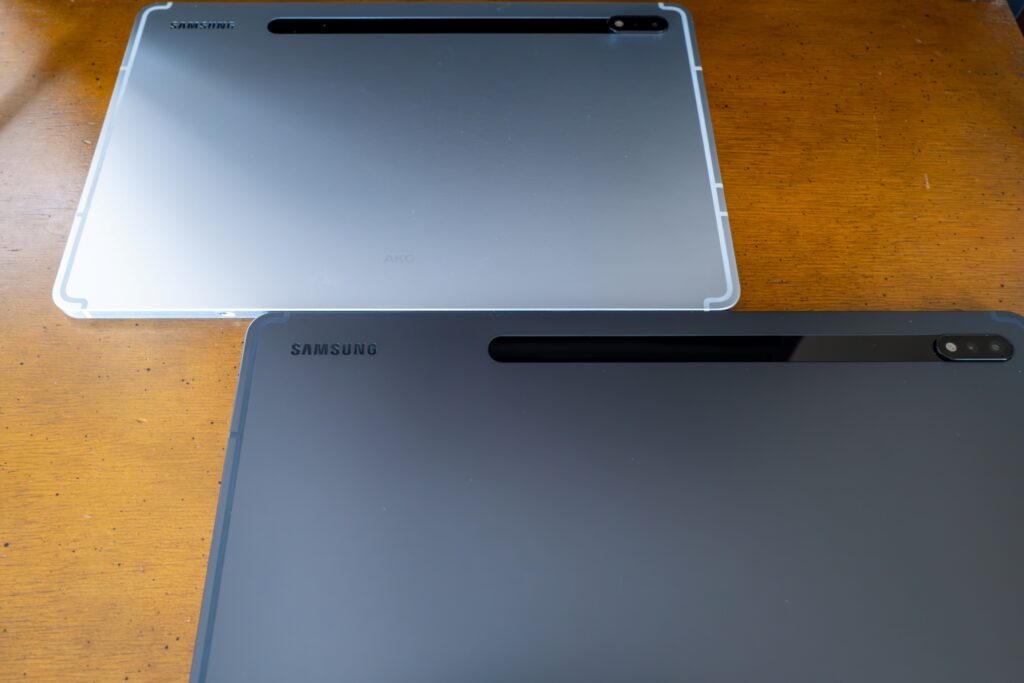Let’s recap: In December 2022, my wife and I decided to wildly change computing platforms; we wanted freedom from Apple. On the 8th, I ordered Surface Laptop 5 for her and Surface Laptop Studio for me from Microsoft Store. Hers: 13.5-inch touchscreen (2256 x 1504 resolution); 12th-generation Intel Core i7-1255U processor; 16GB RAM; 512GB SSD. Mine: 14.4-inch touchscreen (2400 x 1600 resolution); quad-core 11th-generation Intel Core H35 i7-11370H processor; 4GB Nvidia GeForce RTX 3050 Ti graphics; 32GB RAM; 2TB SSD.
Two days later, I ordered Galaxy S22 and S22 Ultra direct from Samsung. Both smartphones arrived on the 15th. Storage: 256GB for her; 512GB for me—both free, double capacity upgrades during the manufacturer’s holiday promotion. Unexpectedly, in mid-February, I traded up for the spanking new S23 Ultra. What stayed: Both our iPads, as I waited to see what new tablets Google, or perhaps Samsung, would bring to market this year. Recap over, the rest of the post explains what happened and why.
On May 10, 2023, Google unveiled the long-anticipated Pixel Tablet alongside Pixel Fold smartphone. Both devices had me salivating. How ridiculously convenient: The search giant presented a buy button clickable from the YouTube live stream of the I/O developer conference. I ordered two slates, right away, which put me at the front of the queue for expected June 20 delivery.
Pixel Fold enthralled me, and I seriously might have ordered one had Google offered trade-in option for my Samsung smartphone. But, for whatever reason, S22 Ultra was discount-swappable but there was no option for the S23. During the several days that followed, I methodically poured through texts and videos from reviewers who had attended the event. Their analyses and reactions helped me put reason before emotion. I abandoned any pretense of buying because of the increased complexity of more moving parts to break and lack of dust protection rating.
Pixel Tablet’s glow of enthusiasm faded, too. We don’t have, or want, a connected home; that is the primary usage scenario for the device. Slow charging (15 watts) from the included dock and 60Hz display refresh rate weighed into my misgivings. Meanwhile, Samsung started one of its sale weeks on May 15.
So I looked at the savings. Trading in my iPad Pro and taking advantage of Samsung discounts and storage upgrades, Anne and I could get two tablets with better specs, stylus, and styling for less than what we would pay for the Pixel tablets. Near Midnight on the 17th, I cancelled the Google order and placed one with Samsung. Galaxy Tab S8 for her and S8+ for me arrived today. Hers: 11-inch LTPS LCD, 8GB RAM, 256GB storage; silver. Mine: 12.4-inch Super AMOLED, 16GB RAM, 512GB storage; graphite.
The Featured Image doesn’t show off either device very well. But with our daughter moving in during her recovery, her taking over my office, and build up of overall apartment clutter as a result, I have fewer surfaces upon which to place things for photo shoots. Vitals, aperture accidentally set: f/8, ISO 4000, 1/15 sec, 28mm; 6:12 p.m. PDT, today; Leica Q2.
Something else, which is either disturbing or liberating, depending on perspective. Adobe Photoshop Lightroom now offers AI-noise reduction, which I tried for this photo. The result is frighteningly good.
